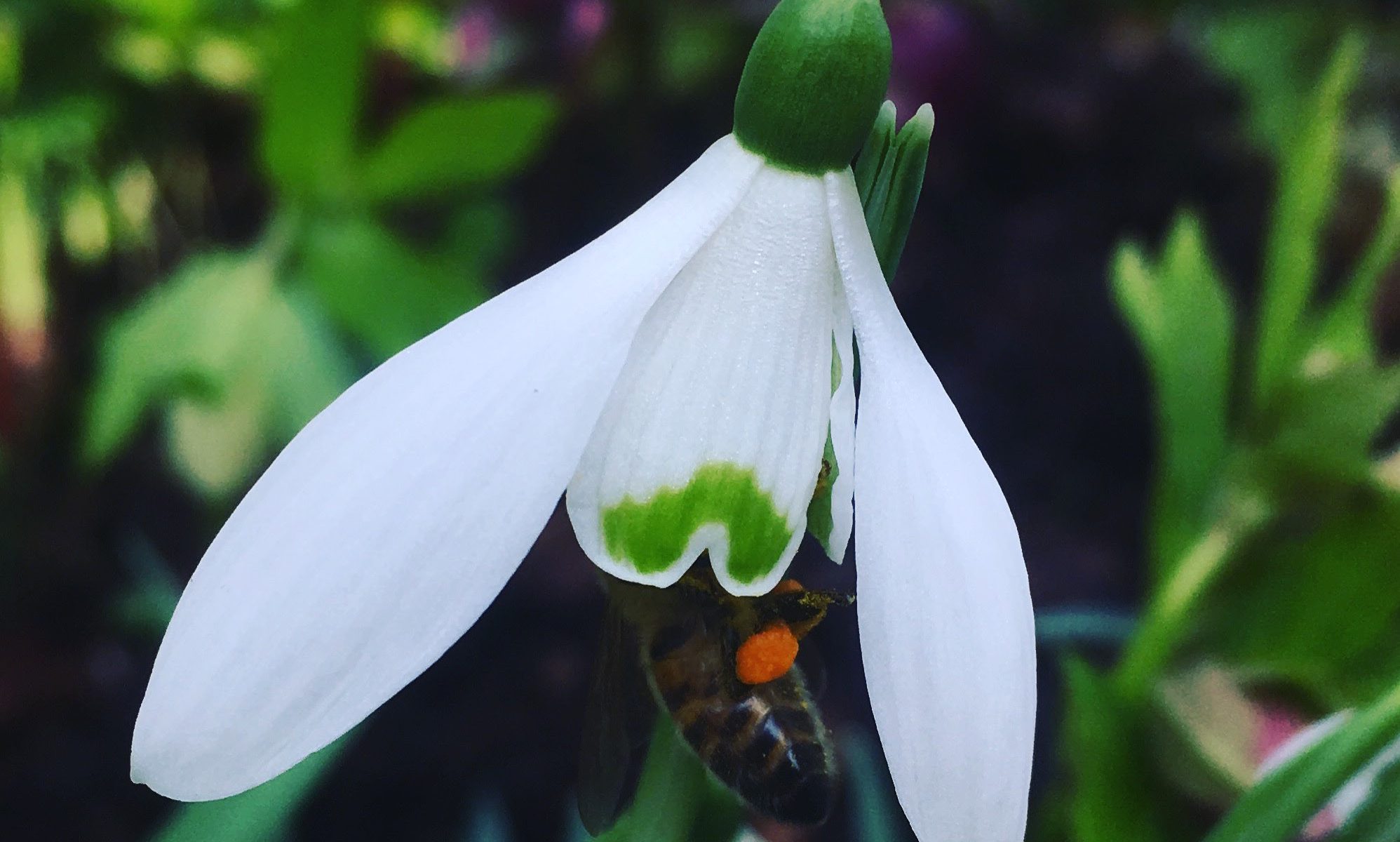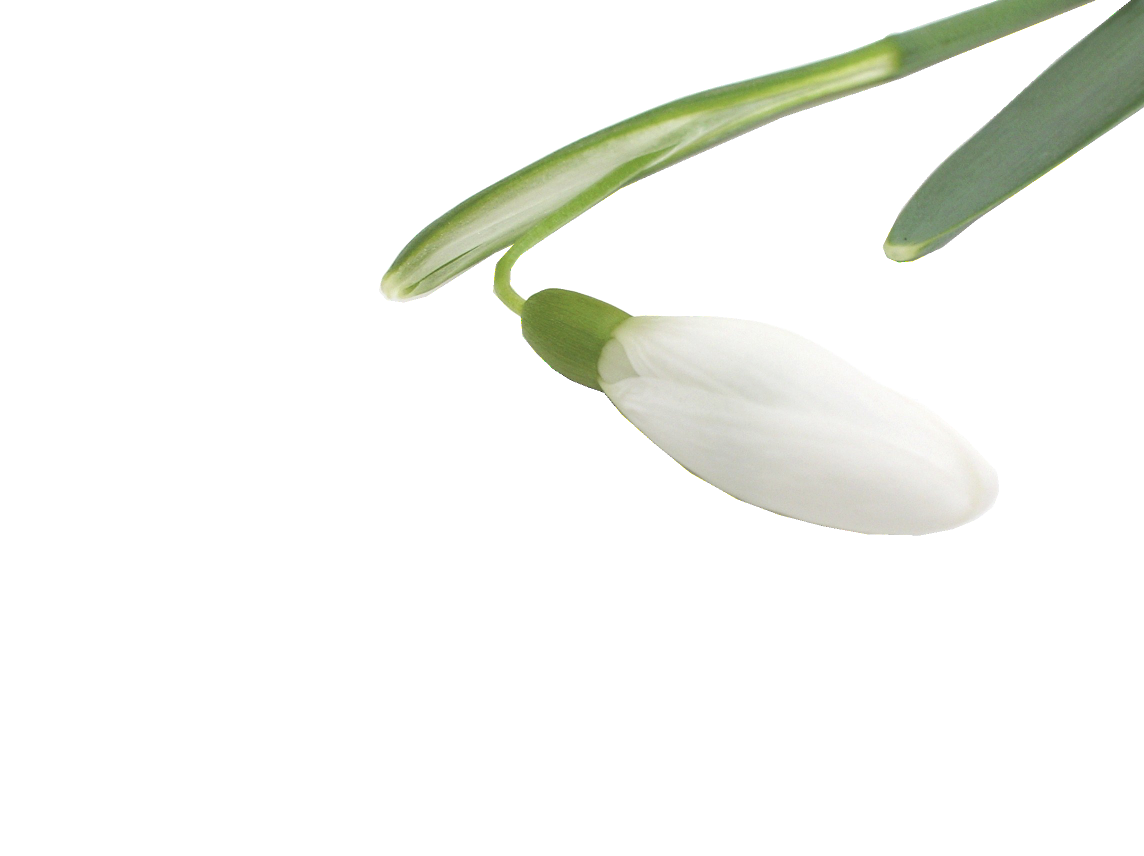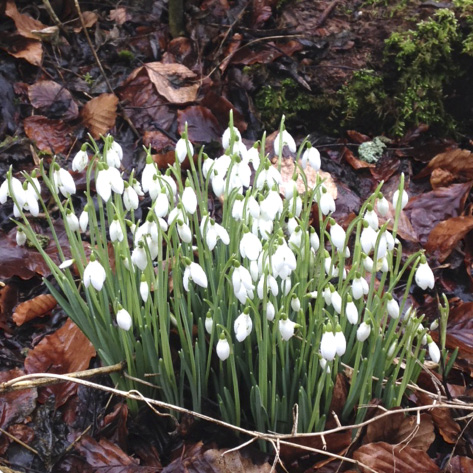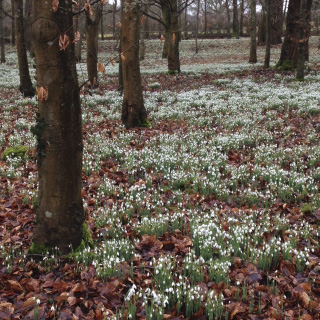I went to a talk about Sissinghurst Castle Garden a few evenings ago and we were reminded that Vita Sackville-West would have little pots and posies of flowers on her desk to inspire her as she wrote about them. I’ve had a small pot of Galanthus ‘S. Arnott’ outside my back door for a year and brought it in about half an hour before sitting down to write, thinking of Vita and those vases, and lo and behold, the flowers, tightly closed for the night, have opened up fully in minutes. This really is the way to see snowdrops and their subtle beauty – face to face. Actually, G. ‘S. Arnott’ is an absolutely classic snowdrop with large, textured petalled flowers and with such a pretty scent. It wasn’t introduced until 1951 when it immediately received an Award of Merit from the RHS. Its origins remain confused despite taking the name of Samuel Arnott who entitled a review he published on snowdrops in 1904 as The Fair Maids of February. Such an apt title.
Snowdrops are not native to the British Isles and G. nivalis, the common snowdrop, which has become widely naturalised both here and in Europe, was first referred to in the sixteenth century. Carl Linnaeus gave snowdrops their scientific name in 1735 from the Greek gala meaning milk and anthos, flower. However, it seems that they might have been planted by Norman monks in the grounds of ecclesiastical buildings as a symbol of purity and they are certainly often found in graveyards and abbey ruins. Sheets and sheets of G. nivalis grow in the beech woods at Welford Park, nr Newbury, visited just a week ago. A period of mildish damp weather had caused them to shoot up in their thousands although they were not yet in their full glory. Welford Park is one of the many monastic sites in the country famous for its snowdrops and it seems that they were an important element of church decoration there for the feast of Candelmas.
By 1600 G. nivalis was joined by G. plicatus from which so many hybrids and cultivars have been developed but it wasn’t until the mid nineteenth century that there was much interest in snowdrops. The snowdrop was widely used in Victorian design as a motif so was certainly becoming popular by then. New forms of G. plicatus were brought back from soldiers fighting in the Crimea in the 1850s and it is interesting to read that Scotland is particularly good for snowdrops as many Scottish regiments were sent out there. The G. plicatus they brought back soon hybridised with G. nivalis. A particularly choice snowdrop, G. ‘Castle Green Dragon’ was found in the grounds of Brechin Castle whose owner, Lord Dalhousie, had strong links with the Crimea.
Snowdrops are geophytes meaning that for a large part of their yearly life cycle there is no sign of them at all as they exist underground. And whilst you could describe this as their dormant period, far from it. It is all happening in that the flower buds will form in the preceding March before flowering and continue to develop for about eleven months. By June the flower parts are clearly formed and then there is good root development as the soil temperature drops and the plant prepares for flowering. After flowering most of the starch reserves in the bulb are used up and the bulb becomes flabby and in dire need of replenishment. That’s why it is always better to buy snowdrops ‘in the green’ after they’ve flowered and then get them into the ground as soon as possible. Bulbs can just dry out and fail. So plant them in a site with good drainage, good light, never under evergreens and add plenty of organic matter, leaf mould or well rotted garden compost. If you have heavy soil chuck in a handful of grit and some bone meal for good measure. Ideally you would divide the clumps every two years or so if you want your plants to bulk up.
There are literally thousands of snowdrops to choose from these days with galanthophiles breeding more and more hybrid beauties. The trend now is towards yellow markings and of course, a single plant can cost a considerable amount although nothing like the fabulous sums paid for tulips in the 17th century.
G. ‘Atkinsii’ is an early flowering cultivar whose flowers are described as resembling ‘the drop-pearl earrings of Elizabeth I’. Its outer petals are very slim and the inner petals have a distinctive heart shaped green marking. Another distinguishing feature is the fact that one leaf of each bulb is usually folded back. This is a good snowdrop to try as it is both vigorous and has a delicious honey scent.
G. ‘Magnet’ is another easy to grow snowdrop. The flower is carried on a very slender pedicel which causes the flower to sway in the slightest of breezes.
G. plicatus ‘Trym’ – as the flowers of this snowdrop open, the outer petals reflex and the flower looks like a little Chinese pagoda with distinctive green markings on the outer petals. It has had a cult following amongst galanthophiles since its discovery in a domestic garden in Westbury-on-Trym, nr. Bristol.
G. nivalis f. pleniflorus ‘Flore Pleno’ is the double form of G. nivalis and well worth growing. They are not difficult and spread easily. The inner petals are dense and are prettily tipped in green.
G. elwesii have been big business in Turkey for years and whilst there are now many different and variable cultivars, one in particular worth growing is ‘Comet’. It has a beguiling combination of large flowers and broad grey leaves, each one of which wraps around the other at the base of each flower – a very distinctive characteristic.


















